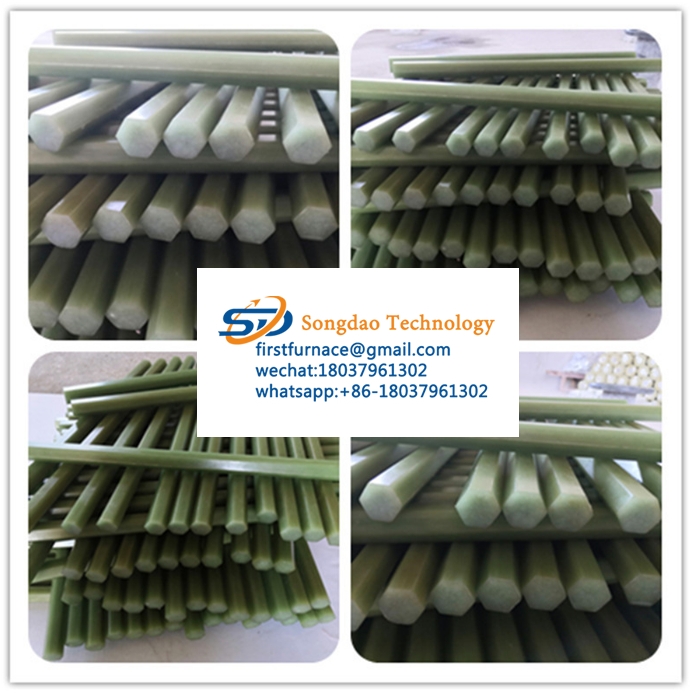- 27
- Sep
Is the epoxy glass fiber rod toxic?
Is the epoxy glass fiber rod toxic?
Epoxy resins and epoxy resin adhesives are non-toxic, but due to the addition of solvents and other toxic substances in the preparation process, many epoxy resins are therefore “toxic”. In recent years, the domestic epoxy resin industry is adopting water-based modification to avoid Adding and other ways to maintain the “non-toxic” nature of epoxy resin. At present, most epoxy resin coatings are solvent-based coatings, which contain a large amount of volatile organic compounds (VOC), which are toxic and flammable, thus causing harm to the environment and human body. 
Epoxy resin is generally used together with additives to obtain application value. Additives can be selected according to different purposes. Commonly used additives include the following categories: (1) curing agent; (2) modifier; (3) filler; (4) diluent; others.
Is the epoxy glass fiber rod toxic? Among them, the curing agent is a *additive. Whether it is used as an adhesive, coating, or castable, it must be added with a curing agent, otherwise the epoxy resin cannot be cured. Epoxy resins generally refer to organic polymer compounds containing two or more epoxy groups in the molecule. Except for a few, their relative molecular masses are not high. The molecular structure of epoxy resin is characterized by the active epoxy group in the molecular chain. The epoxy group can be located at the end, in the middle or in a cyclic structure of the molecular chain. Because the molecular structure contains active epoxy groups, they can undergo cross-linking reactions with various types of curing agents to form insoluble and infusible polymers with a three-way network structure.
The performance and characteristics of epoxy resin
1. பல்வேறு வடிவங்கள். பல்வேறு பிசின்கள், குணப்படுத்தும் முகவர்கள் மற்றும் மாற்றியமைக்கும் அமைப்புகள் படிவத்தில் உள்ள பல்வேறு பயன்பாடுகளின் தேவைகளுக்கு ஏறக்குறைய மாற்றியமைக்க முடியும், மேலும் வரம்பு மிகவும் குறைந்த பாகுத்தன்மை முதல் அதிக உருகும் புள்ளி திடப்பொருட்கள் வரை இருக்கலாம்.
2. வசதியான குணப்படுத்துதல். பல்வேறு குணப்படுத்தும் முகவர்களைத் தேர்வுசெய்க, எபோக்சி பிசின் அமைப்பை 0 ~ 180 temperature வெப்பநிலை வரம்பில் கிட்டத்தட்ட குணப்படுத்த முடியும்.
3. வலுவான ஒட்டுதல். எபோக்சி பிசின்களின் மூலக்கூறு சங்கிலியில் உள்ள உள்ளார்ந்த துருவ ஹைட்ராக்சைல் குழுக்கள் மற்றும் ஈதர் பிணைப்புகள் பல்வேறு பொருட்களுக்கு அதிக ஒட்டுதலை ஏற்படுத்துகின்றன. குணப்படுத்தும் போது எபோக்சி பிசின் சுருக்கம் குறைவாக இருக்கும், மேலும் உள் அழுத்தமானது சிறியதாக உள்ளது, இது ஒட்டுதல் வலிமையை மேம்படுத்த உதவுகிறது.
4. Low shrinkage. The reaction between the epoxy resin and the curing agent used is carried out by direct addition reaction or ring-opening polymerization reaction of epoxy groups in the resin molecule, and no water or other volatile by-products are released. Compared with unsaturated polyester resins and phenolic resins, they show very low shrinkage (less than 2%) during curing.
5. Mechanical properties. The cured epoxy resin system has excellent mechanical properties.
6, electrical performance. The cured epoxy resin system is an excellent insulating material with high dielectric properties, surface leakage resistance, and arc resistance.
7. Chemical stability. Generally, the cured epoxy resin system has excellent alkali resistance, acid resistance and solvent resistance. Like other properties of the cured epoxy system, the chemical stability also depends on the selected resin and curing agent. Appropriate selection of epoxy resin and curing agent can make it have special chemical stability.
8. Dimensional stability. The combination of many of the above properties gives the epoxy resin system outstanding dimensional stability and durability.
9, mold resistant. The cured epoxy resin system is resistant to most molds and can be used in harsh tropical conditions。
